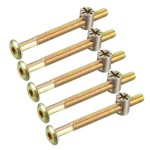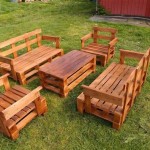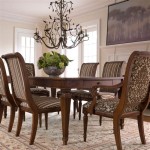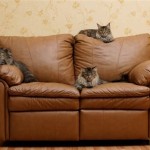How To Make Your Own Cat Furniture
Providing cats with appropriate outlets for their natural behaviors such as scratching, climbing, and resting is crucial for their well-being. Commercial cat furniture can often be expensive and may not perfectly fit the available space or aesthetic preferences of a home. Constructing cat furniture independently offers a cost-effective and customizable solution to cater to a cat's specific needs and integrate seamlessly into the existing decor.
Building cat furniture allows for complete control over the materials used, ensuring safety and durability. It also provides an opportunity to create unique and personalized pieces that enhance both the cat’s environment and the owner’s living space. This article will outline the fundamental principles and practical steps involved in crafting various types of cat furniture, from simple scratching posts to elaborate multi-tiered cat trees.
Planning and Design Considerations
Prior to commencing any construction project, meticulous planning is essential. This involves assessing the cat's individual preferences, the available space, and the desired functionality of the furniture. Observe the cat's current behavior to identify favorite scratching surfaces, preferred heights, and typical resting areas. Document these observations to inform the design process.
Spatial considerations are paramount. Measure the intended location for the furniture and consider the surrounding environment. Ensure the furniture does not obstruct walkways or create hazards. A multi-tiered cat tree, for instance, requires sufficient vertical space and a stable base to prevent tipping. Smaller spaces might be better suited for wall-mounted shelves or a compact scratching post.
Design choices should prioritize the cat's safety and comfort. Avoid sharp edges, protruding nails or staples, and potentially toxic materials. Select fabrics that are durable, easy to clean, and appealing to the cat. Sisal rope is a popular choice for scratching posts due to its natural texture and resistance to wear and tear. Plush fabrics or soft carpeting can be used for resting platforms.
Sketching preliminary designs or using computer-aided design (CAD) software can aid in visualizing the finished product and identifying potential problems before construction begins. These designs should include detailed measurements and a comprehensive list of required materials. Accurate planning significantly reduces errors and ensures a more efficient building process.
Consider the overall aesthetic of the home during the design phase. Cat furniture can be designed to complement existing furniture styles and color schemes. Staining or painting wooden components can enhance their visual appeal. Integrating natural elements, such as branches or untreated wood, can also create a more organic and inviting environment for the cat.
Essential Materials and Tools
The selection of appropriate materials is crucial for the longevity and safety of cat furniture. The primary structural components are typically constructed from wood, such as plywood, pine, or solid hardwood. Plywood is a cost-effective option for larger panels, while solid wood provides superior strength and stability for supporting posts and braces. Ensure that the wood is free from splinters and has been properly sanded to prevent injuries.
Scratching surfaces can be created using sisal rope, carpeting, or corrugated cardboard. Sisal rope is a durable and natural option that cats instinctively enjoy scratching. Carpeting remnants can be repurposed to cover platforms or create scratching pads. Corrugated cardboard is a readily available and inexpensive material that can be used to construct scratching boxes or pads.
Fabrics used for covering platforms or creating cushions should be durable, washable, and resistant to scratching. Fleece, canvas, and upholstery fabrics are suitable choices. Avoid delicate fabrics that are easily damaged or contain loose fibers that could be ingested by the cat.
Adhesives play a critical role in securing materials together. Non-toxic wood glue is essential for bonding wooden components. Construction adhesive can be used to attach carpeting or sisal rope to wood surfaces. Ensure that all adhesives are fully cured before allowing the cat to interact with the furniture to prevent ingestion of harmful chemicals.
The following tools are typically required for constructing cat furniture: a saw (circular saw, jigsaw, or hand saw), a drill with various drill bits, a screwdriver (or power screwdriver), a measuring tape, a level, a staple gun, and sandpaper. Safety glasses and gloves are essential for protecting against injuries. A dust mask is recommended to prevent inhalation of sawdust particles.
Construction Techniques and Project Examples
The construction of cat furniture generally involves cutting, shaping, and assembling wooden components, followed by attaching scratching surfaces and fabric coverings. The specific techniques used will vary depending on the design and complexity of the project.
A simple scratching post can be constructed by wrapping a wooden post with sisal rope. Begin by cutting a length of wooden post to the desired height. A sturdy base, such as a square piece of plywood, should be attached to the bottom of the post to provide stability. Use wood glue and screws to secure the base. Apply construction adhesive to the post in small sections and tightly wrap the sisal rope around the post, ensuring there are no gaps. Secure the ends of the rope with staples or glue. A decorative top can be added to the post for aesthetic appeal.
A wall-mounted cat shelf provides a space-saving and elevated resting area. Cut a piece of plywood to the desired size and shape. Attach sturdy wall brackets to the underside of the shelf using screws. Ensure that the brackets are securely anchored to wall studs for maximum stability. Cover the top of the shelf with carpeting or fabric using construction adhesive and staples. The shelf can be positioned at various heights to create a climbing pathway for the cat.
A multi-tiered cat tree involves constructing a series of platforms supported by wooden posts. Begin by creating a stable base, typically a large square or rectangular piece of plywood. Attach several wooden posts to the base using wood glue and screws. The posts should be of varying heights to create different levels. Cut plywood platforms to the desired size and shape and attach them to the posts at various heights. Cover the platforms with carpeting or fabric. Sisal rope can be wrapped around some or all of the posts to provide scratching surfaces. Additional features, such as hanging toys or enclosed hiding spaces, can be incorporated into the design.
When assembling any cat furniture, it is crucial to ensure that all joints are strong and secure. Use wood glue and screws to reinforce connections. Countersink screws to prevent them from protruding and causing injuries. Sand all edges and surfaces to remove splinters and rough spots. Thoroughly clean the finished furniture to remove dust and debris before allowing the cat to use it.
Consider adding personalized touches to enhance the appeal of the furniture. Catnip can be sprinkled on scratching surfaces to encourage use. Small toys or feather wands can be attached to the furniture to provide entertainment. The furniture can be painted or stained to match the existing decor of the home.
Safety and Maintenance Considerations
Safety is paramount when constructing cat furniture. Use non-toxic materials and adhesives to prevent harm to the cat. Avoid sharp edges, protruding nails or staples, and loose fabrics that could be ingested. Ensure that the furniture is stable and cannot be easily tipped over.
Regular maintenance is essential for maintaining the longevity and safety of cat furniture. Inspect the furniture periodically for signs of wear and tear, such as loose screws, frayed rope, or damaged fabric. Repair or replace damaged components promptly to prevent injuries.
Cleaning cat furniture regularly helps to prevent the buildup of dirt, hair, and odors. Vacuum the furniture frequently to remove loose hair and debris. Spot clean stains with a mild detergent and water. Wash removable fabric covers in a washing machine according to the manufacturer's instructions.
Replace scratching surfaces as needed. Sisal rope will eventually wear out from repeated scratching. Carpeting may become frayed or torn. Replacing these materials will keep the furniture looking its best and provide the cat with a fresh scratching surface.
Monitor the cat's interaction with the furniture. If the cat shows signs of discomfort or avoidance, reassess the design and make adjustments as needed. Ensure that the furniture is accessible and meets the cat's individual needs.
By adhering to these guidelines, the construction of functional and aesthetically pleasing cat furniture should provide enriching environments for pets and enhance living spaces.

Make A Homemade Cat Condo Using Lack Tables

How To Build A Cat Tree For Under 100 Pet Photographer Pawtastic Photography

19 Diy Cat Furniture Plans You Can Build Today With S Hepper Pet Resources

Diy Cat House Build Your Own Dreamies

How To Make Your Own Cat Tower Or Tree

Homemade Cat Stands Top

Craft Your Own Kitty Playground When You Create A Diy Cat Tower
Making Your Own Cat Tree Sphynxlair

Build Your Own Cat Tower Online

Cat Tree Plans Make Your Own Furniture Stop From Scratching Complete
See Also








